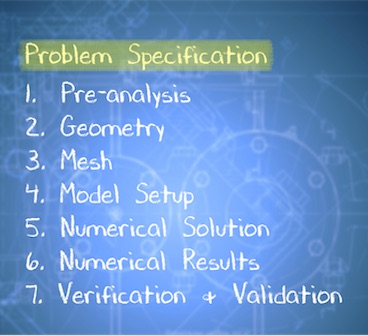| Include Page |
|---|
...
|
...
|
| Include Page |
|---|
...
|
...
|
| Info |
|---|
This module is from our free online simulations course at edX.org (sign up here). The edX interface provides a better user experience, so we have moved the module there. |
Laminar Pipe Flow
Created using ANSYS 13.0
Problem Specification
...
16.2
Learning Goals
In this module, you'll learn to:
- Develop the numerical solution to a laminar pipe flow problem in ANSYS Fluent
- Verify the numerical results from ANSYS Fluent
- Connect the ANSYS steps to concepts covered in the Computational Fluid Dynamics section
Problem Specification
This module is drawn from MAE 4230/5230 Intermediate Fluid Dynamics at Cornell University.
Consider fluid flowing through a circular pipe of constant radius as illustrated
...
below. The figure is not to scale. The pipe
...
diameter D = 0.2 m and
...
length L
...
= 3 m Consider the inlet velocity to be constant over the
...
cross-section and equal to 1 m/s. The
...
pressure at the pipe outlet is 1 atm. Take
...
density ρ = 1 kg/ m
...
3 and coefficient of
...
viscosity µ = 2 x 10 -
...
3 kg/(
...
m*s).
...
These parameters have been chosen to get a desired Reynolds number of 100 and don't correspond to any real fluid.
We'll solve this problem numerically using ANSYS Fluent. We'll look at the following results:
Velocity vectors
Velocity magnitude contours
Pressure contours
Velocity profile at the outlet
We'll verify the results by following a systematic process which includes comparing the results with the analytical solution in the full-developed region.
Solve this problem using FLUENT via ANSYS Workbench. Plot the velocity and pressure variation within the pipe. Validate your results.
Note: The values used for the inlet velocity and flow properties are chosen for convenience rather than to reflect reality. The key parameter value to focus on is the Reynolds number.
Go to Step 1: Pre-Analysis & Start-up
 Sign-up for free online course on ANSYS simulations!
Sign-up for free online course on ANSYS simulations!
